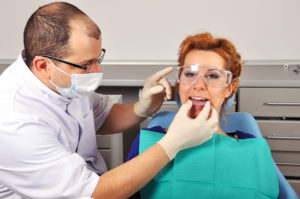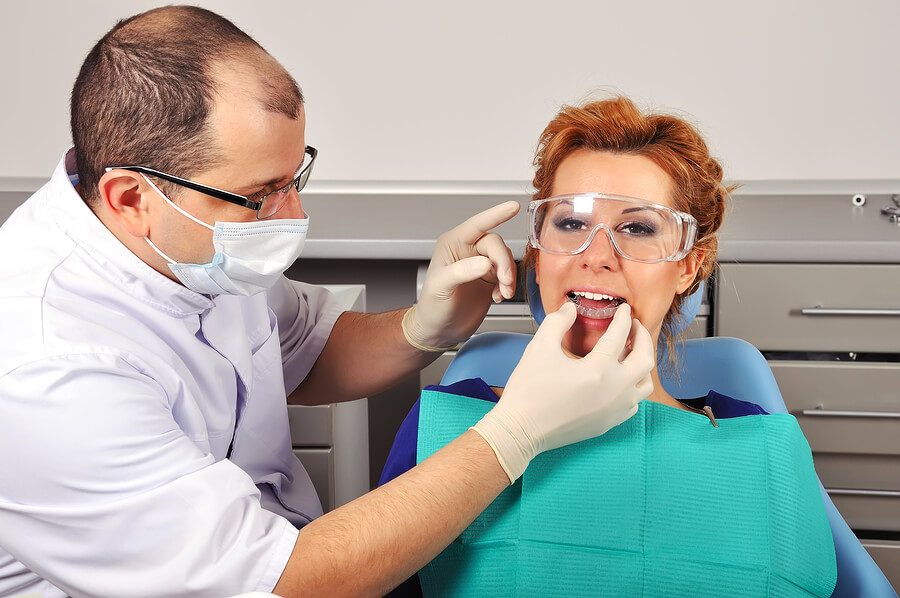
The temporomandibular joints on either side of the face that help make it possible for a person to move their lower jaw can experience joint dysfunction from one or more disorders (TMD).
Those who have TMD might experience jaw movement difficulties, strange noises like clicking, popping and grating and/or pain at one or both joints, along the jaw, across the face or at the temples.
Some people also experience tinnitus or ear ringing and facial nerve tingling and numbness.
Typically, TMD is caused by joint disc problems like compression, slippage and deterioration, deformities or an accident. Bad habits and nearby structural issues can also cause TMD symptoms.
Thankfully, most treatments for what patients often refer to as their “TMJ” don’t require any sort of invasive procedure unless the oral structures or joints need surgical alteration. Many times these three non-invasive treatments can make life better:
1. Oral Orthotic TMJ Splint
While the term ‘night guard’ may be recognizable as a inserts that can be worn during sleep to prevent jaw clenching, the use of an oral orthotic TMJ splint may be the best choice to resolve the issue.
An oral orthotic TMJ splint is different from a night guard, as it is made of hard acrylic and is custom made for each patients’ unique case. This specially designed orthotic can then provide the right amount of occlusal opening to relieve the joint stress.
Once the stress is relieved by the splint, natural healing can begin to occur bringing long term relief from the pain, clicking, and popping associated with TMJ.
2. Physical Therapy
Learning relaxation techniques, performing stretching and strengthening exercises, enjoying the benefits of heat and cold therapy, and treating both the joint and muscles involved are some of the aspects that physical therapies for TMJ typically involve.
Heat and cold therapy assist in stretching and strengthening all parts of your jaw area. Heat can allow improved circulation to the jaw. Cold therapy can ease discomfort and swelling.
Range of motion and flexibility in the jaw can be achieved through physical therapy exercises and manipulations.
Correcting posture and focusing on ways to keep the jaw and neck in a neutral position contribute to moving forward with greater knowledge and improved habits that when used in daily life, can allow healing to occur.
3. Diet Changes And Stress Management
Changes in how we eat and manage our stress can improve TMD sypmtoms. Sometimes the jaw needs a break from all the busy activites it is asked to do on top of just eating.
Chewing gum, biting nails or pencils, and clenching teeth can negatively impact an overworked jaw. Being aware, then choosing and implementing non harmful coping strategies for stress can aid in relaxation for the joint and muscles involved with TMD.
Also, certain types of food can challenge the jaw. Cracking foods like ice, hard candies, and thick pretzels between your teeth can damage both the teeth and joints over time and over-tighten some facial muscles.
The same results occur when you repeatedly eat sticky and gummy foods, especially foods that harden the more you chew.
Additionally, if you primarily eat on one side of your mouth, you fail to evenly distribute the work between all of your teeth or joints. This action wears teeth on one side faster causing the mandible to rest in a slanted position and puts unnecessary strain on facial muscles and joints.
Also, improving nutritional quality can promote healing and lessen pain. Designing a soft diet that still provides foods rich in vitamins and minerals, anti inflammatory qualities such as Omega-3, and that are enjoyable, delicious, and nutritious is possible and will help promote healing.
Contact AZ-TMJ’s Dr. Stan Farrell Today
You can reduce or even erase the pain and other difficulties caused by TMD. Dr. Stan Farrell has many years of expertise dealing with temporomandibular joint dysfunction challenges and the solutions that can work for you.
Call for a consultation to learn how to take advantage of these options and others that can allow you to be pain free. Contact Dr. Farrell at 480-945-3629 today.




